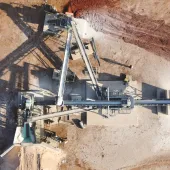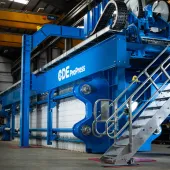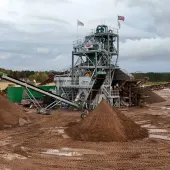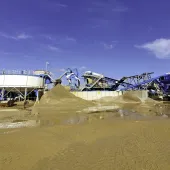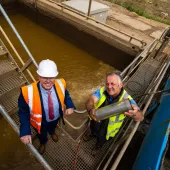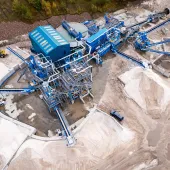Sand Production Process Control
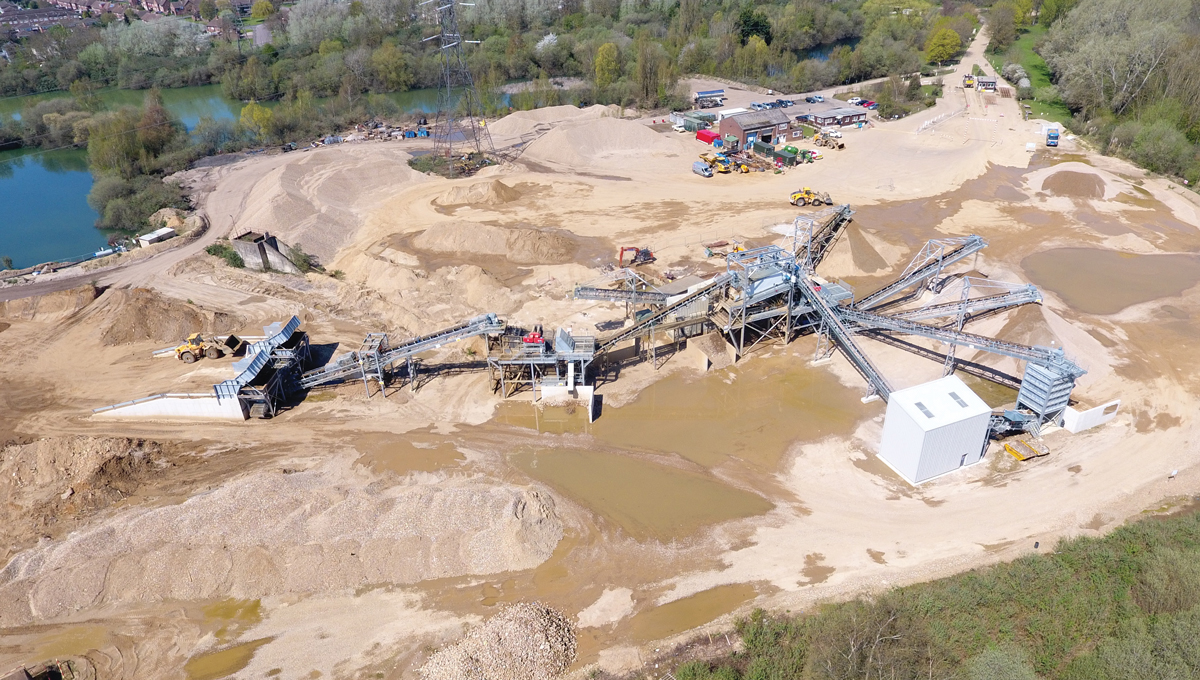
First published in the July 2019 issue of Quarry Management
Mineral Engineering Processes (MEP) explain why quality sand products require specialist process treatments
In recent times, one of the main developments in silica sand processing, as in many other industrial processes, has been the use of systems to control and record the performance of production plants, commonly known as SCADA (supervisory control and data acquisition).
These controls provide integrated and centralized facilities that can be housed in a suitable environment. Operators can use mobile devices such as phones or tablets.
When connected with a suitable fibre or high-speed connection, plant control systems provide remote access for engineers, often speeding up the diagnosis and resolution of operational issues.
Controlling sump levels has long been recognized as an important factor in maintaining pump performance stability – by using level controls and automatic valves to control the flow of ‘make-up’ water, together with variable-speed pumps, the operator can substantially reduce the swings and variations of product gradings.
The use of more sophisticated and accurate separating devices such as the TBS Hydrosizer allows the operator to maintain a constant size classification of the product almost regardless of feed rates. It also offers the possibility of producing higher-quality products by identifying the deficient elements of a feed material and re-blending to achieve the required product grading.
Sand production has often been an art form where the ingenuity of the operator has been relied upon to enable producers of specialist products to maintain their markets, but now the consequential liabilities are such that the element of risk needs to be eliminated as far as possible.
Deposits that do not readily fall into the required specification, such as Bunter and glacial sands, or where silt contents vary widely and have deficiencies in gradings, can be successfully treated.
Contamination such as lignite is often present in river terrace deposits where it is necessary, due to dwindling reserves, to excavate deposits that were previous rejected. Other raw materials, such as sea-dredged deposits, can contain coal, coke, wood, roots and fish, which also cause problems and need to be removed.
None of the above problems can be resolved using cyclones and screens alone.
Traditionally, the removal of lignite etc down to 1.0mm size has been acceptable but now the demand is for cleaner material, eg down to 0.1mm. These problems can be solved by using two stages of the TBS Hydrosizer which will separate and remove the low-density (eg <1.8 sg) materials from the silica sand. It can treat material up to 6.0mm size and accurately classify at any size up to approximately 0.7mm. (Note: Classifications at greater than 0.7mm are carried out more efficiently by screens, whereas classifications lower than 0.7mm are more efficiently carried out using a TBS Hydrosizer).
Also available is the Hydrolig, which is a hybrid version of the TBS Hydrosizer. This machine has been adapted to treat and remove contamination from –40mm +4mm gravel and is well suited to work in tandem with the TBS Hydrosizer.
The demand for more accurately classified sand, eg for sports surfaces, has increased and this again calls for more sophisticated equipment with two stages of treatment, eg separating at 0.6mm in the first stage and efficiently removing the fines (eg <0.1mm) in the second stage.
Obviously, for overall commercial reasons the producer will need to find markets for all of the products, including the discarded elements made during the production of the premium products.
The Health and Safety Executive has set ‘hard targets’ for the quarrying industry in general and this includes sand processing plants. It has resulted in the design needing to include additional features to reduce accidents. Clear and adequately sized walkways, stairways instead of ladders, secondary egress, no head-height obstructions and safe working areas for maintenance are some of the points that need careful design. Any plant that compromises on the design to save space or to provide mobility will inevitably have a negative effect on the performance, efficiency and safety aspects.
Health and safety issues are having an increasing effect on the design and build of processing plants and there has been a rash of new and revised standards. The principal requirement for the design of plant in Europe is to meet the ‘Essential Health and Safety Requirements’ of the revised Machinery Directive 2006/42/EC.
From the start of 2010, new machinery should comply with the latest standards. It is worth noting that new plants that include assemblies of older machinery also have to comply with the Directive.
A designer’s risk assessment is essential, and it needs to address the items in the ‘Essential Health and Safely Requirements’ as well as hazards identified in BS EN ISO 12100:2010. MEP, a certified member of Avetta, are certified to BS EN ISO 9001:2015 Quality Management Systems and comply with the latest standards for health and safety in the design and construction of their plants.
Plant purchasers too must recognize their legal responsibility under the ‘Provision and Use of Work Equipment Regulations 1998’ (PUWER Regulations) and accept that these provisions will increase the capital cost of plants, be they mobile or fixed.
For further information visit: www.ukmep.com
- Subscribe to Quarry Management, the monthly journal for the mineral products industry, to read articles before they appear on Agg-Net.com


